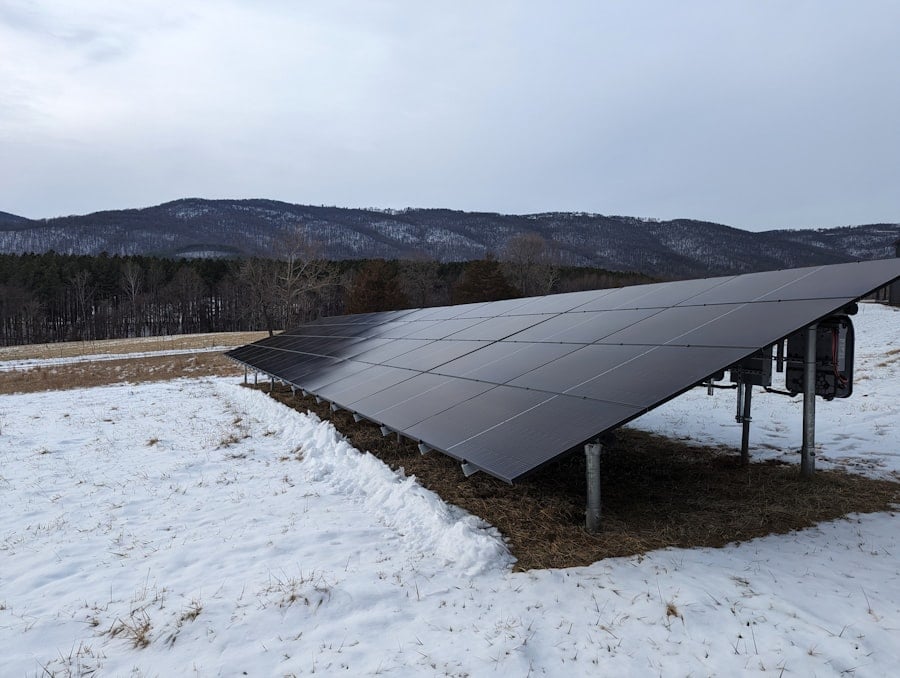Off-grid solar systems represent a transformative solution to energy access challenges faced by millions around the globe, particularly in remote and underserved regions. These systems harness solar energy to provide electricity independently of the traditional grid, making them an ideal choice for communities that lack reliable power sources. Off-grid solar technology typically includes solar panels, batteries for energy storage, and inverters to convert the stored energy into usable electricity.
This innovative approach not only empowers communities but also contributes to sustainable development by reducing reliance on fossil fuels and minimizing carbon footprints. The significance of off-grid solar systems extends beyond mere energy provision; they serve as a catalyst for economic growth, education, and improved health outcomes. By enabling access to electricity, these systems facilitate the operation of schools, healthcare facilities, and small businesses, thereby enhancing the quality of life for individuals in off-grid areas.
As the world increasingly recognizes the urgency of addressing climate change and energy poverty, off-grid solar systems emerge as a viable and impactful solution that aligns with global sustainability goals. Are You Working on Solar Innovation or Clean Energy Access? Join us to receive updates.
Key Takeaways
- Off-grid solar systems provide clean and reliable energy access to remote and underserved communities.
- Donor investments play a crucial role in advancing off-grid solar technology and expanding access in developing countries.
- Top donors, such as government agencies and international organizations, are driving innovation and scalability in off-grid solar solutions.
- Donor investments have a significant impact on increasing off-grid solar access and improving livelihoods in developing countries.
- Collaborative efforts between donors and local communities are essential for the success and sustainability of off-grid solar projects.
The Importance of Donor Investments in Off-Grid Solar Systems
Donor investments play a crucial role in the development and deployment of off-grid solar systems, particularly in developing countries where financial resources are often limited. These investments can take various forms, including grants, low-interest loans, and technical assistance, all aimed at fostering the growth of renewable energy initiatives. By providing the necessary funding and support, donors enable local organizations and governments to implement off-grid solar projects that would otherwise be financially unfeasible.
This financial backing is essential for overcoming initial capital barriers and ensuring that communities can access clean energy solutions. Moreover, donor investments help stimulate innovation within the off-grid solar sector. By funding research and development initiatives, donors can encourage the creation of more efficient solar technologies and business models that cater to the unique needs of underserved populations.
This not only enhances the effectiveness of off-grid solar systems but also promotes competition among providers, ultimately leading to better services and lower costs for end-users. In this way, donor investments are not merely a means of financial support; they are instrumental in driving systemic change within the energy landscape.
The Role of Top Donors in Advancing Off-Grid Solar Technology

Top donors have emerged as pivotal players in advancing off-grid solar technology through their strategic investments and partnerships. Organizations such as the World Bank, the United Nations Development Programme (UNDP), and various philanthropic foundations have recognized the potential of off-grid solar systems to address energy poverty and climate change simultaneously. By channeling resources into innovative projects, these donors are not only facilitating immediate access to electricity but also laying the groundwork for long-term sustainability.
One notable example is the World Bank’s “Lighting Global” initiative, which aims to provide affordable solar lighting solutions to off-grid communities. Through this program, the World Bank has mobilized significant funding to support local entrepreneurs in developing and distributing solar products tailored to their markets. This approach not only empowers local businesses but also ensures that communities receive products that meet their specific needs.
By fostering collaboration between donors and local stakeholders, top donors are effectively driving the advancement of off-grid solar technology while promoting economic development.
Impact of Donor Investments on Off-Grid Solar Access in Developing Countries
The impact of donor investments on off-grid solar access in developing countries is profound and multifaceted. By providing financial resources and technical expertise, donors have enabled countless communities to transition from reliance on kerosene lamps and diesel generators to clean, renewable energy sources. This shift has resulted in improved health outcomes, as families no longer face the dangers associated with indoor air pollution from burning fossil fuels.
Additionally, access to electricity has facilitated educational opportunities for children who can now study after dark and access digital learning resources. Furthermore, donor investments have catalyzed economic growth by empowering local entrepreneurs to establish businesses powered by off-grid solar systems. Small enterprises can operate more efficiently with reliable electricity, leading to job creation and increased income for families.
For instance, farmers can utilize solar-powered irrigation systems to enhance crop yields, while small-scale manufacturers can expand their operations without the constraints of unreliable power supply. The ripple effect of these investments extends beyond individual households; entire communities benefit from enhanced economic activity and improved quality of life.
Top Donors Leading the Way in Off-Grid Solar Investments
Several key donors have taken a leading role in advancing off-grid solar investments globally. The Green Climate Fund (GCF) is one such organization that has made significant contributions toward financing renewable energy projects in developing countries. By providing grants and concessional loans, the GCF supports initiatives that aim to increase access to clean energy while promoting climate resilience.
Their focus on innovative financing mechanisms has enabled numerous off-grid solar projects to flourish. Another prominent player is the United States Agency for International Development (USAID), which has invested heavily in off-grid solar initiatives through its Power Africa program. This initiative aims to increase electricity access across sub-Saharan Africa by supporting private sector investment in renewable energy solutions.
USAID’s commitment to fostering partnerships between governments, businesses, and civil society has resulted in successful off-grid solar projects that empower local communities while addressing energy poverty.
Case Studies of Successful Off-Grid Solar Projects Supported by Donors

Examining successful case studies can provide valuable insights into how donor investments have transformed communities through off-grid solar projects. One notable example is the Solar Sister initiative in Africa, which combines clean energy access with women’s empowerment. Supported by various donors, Solar Sister trains women entrepreneurs to sell solar products within their communities.
This model not only provides households with affordable solar solutions but also creates economic opportunities for women, fostering gender equality while addressing energy poverty. Another compelling case is the Barefoot College in India, which trains rural women as solar engineers. Funded by various international donors, this initiative empowers women to install and maintain solar systems in their villages.
The impact has been profound: communities gain access to reliable electricity while women gain skills and confidence that enable them to contribute meaningfully to their households and communities. These case studies illustrate how targeted donor support can lead to innovative solutions that address multiple social challenges simultaneously.
Challenges and Opportunities in Off-Grid Solar Investments for Donors
While donor investments in off-grid solar systems present numerous opportunities, they are not without challenges. One significant hurdle is ensuring the sustainability of projects once initial funding has been exhausted. Many off-grid solar initiatives struggle with maintenance and operational costs after donor support ends, leading to system failures and disillusionment among beneficiaries.
To mitigate this risk, donors must prioritize capacity building within local communities, ensuring that they possess the skills and resources needed to maintain their systems over time. Additionally, navigating regulatory frameworks can pose challenges for donors seeking to invest in off-grid solar projects. In many developing countries, bureaucratic hurdles can delay project implementation or increase costs significantly.
However, these challenges also present opportunities for donors to engage with governments and advocate for policy reforms that facilitate renewable energy deployment. By working collaboratively with local authorities, donors can help create an enabling environment for off-grid solar investments that benefits both communities and investors alike.
The Future of Off-Grid Solar Investments: Trends and Projections
The future of off-grid solar investments looks promising as technological advancements continue to drive down costs and improve efficiency. Innovations such as pay-as-you-go (PAYG) models have revolutionized access to solar energy by allowing consumers to pay for their systems incrementally rather than upfront. This approach has made it feasible for low-income households to adopt solar technology without incurring significant debt.
Moreover, as climate change concerns intensify, there is a growing recognition among governments and private investors of the need for sustainable energy solutions. This shift in mindset is likely to result in increased funding for off-grid solar projects as stakeholders seek to align their investments with environmental goals. Projections indicate that the off-grid solar market will continue to expand rapidly over the coming years, driven by both donor support and private sector innovation.
How Donors Are Collaborating with Local Communities for Off-Grid Solar Projects
Collaboration between donors and local communities is essential for the success of off-grid solar projects. Donors are increasingly recognizing that engaging local stakeholders throughout the project lifecycle leads to more effective outcomes. By involving community members in decision-making processes, donors can ensure that projects are tailored to meet specific needs and preferences.
For instance, participatory approaches such as community workshops allow residents to voice their concerns and contribute ideas for project design. This collaborative spirit fosters a sense of ownership among community members, increasing the likelihood that they will actively participate in maintaining and promoting their off-grid solar systems. Such partnerships not only enhance project sustainability but also empower communities by giving them a stake in their own development.
The Social and Environmental Benefits of Off-Grid Solar Investments
The social and environmental benefits of off-grid solar investments are substantial and far-reaching. On a social level, access to clean energy improves health outcomes by reducing indoor air pollution associated with traditional cooking methods and lighting sources. Children benefit from enhanced educational opportunities as they can study at night or access digital learning tools powered by reliable electricity.
Environmentally, off-grid solar systems contribute significantly to reducing greenhouse gas emissions by displacing fossil fuel use in remote areas. As more communities adopt renewable energy solutions, the cumulative impact on global carbon emissions becomes increasingly significant. Furthermore, these systems promote biodiversity conservation by reducing deforestation rates associated with wood fuel collection for cooking and heating purposes.
The Continued Need for Donor Support in Off-Grid Solar Development
In conclusion, donor support remains vital for advancing off-grid solar development worldwide. As we have seen throughout this article, investments from various organizations have catalyzed transformative changes in energy access for millions of people living in underserved regions. However, challenges persist that require ongoing commitment from donors to ensure project sustainability and scalability.
As we look toward the future, it is clear that continued collaboration between donors, local communities, governments, and private sector actors will be essential for realizing the full potential of off-grid solar systems. By working together strategically and leveraging resources effectively, we can create a brighter future powered by clean energy for all—one where no one is left behind in the quest for sustainable development.









































